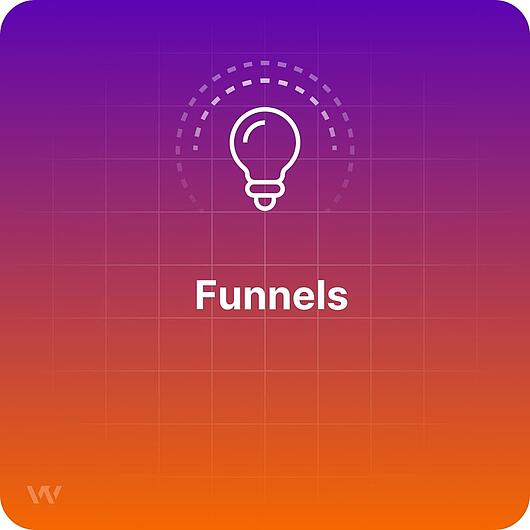- Why Us?
- Features
White Label
For SaaS Platforms & Agencies
Provide our complete analytics suite to your clients, directly within your own interface and with your/their own branding. Discover Analytics-as-a-Service and White Label Analytics. Great benefit, minimal effort.
- Pricing
- White Label
- Success Stories
- ResourcesGetting Started
Funnels
TL;DR
The funnel tool allows website owners to check how many visitors reach a specific page of their website by following a precisely defined process. It also allows them to determine how many visitors drop off at each level of this defined process and to find out potential reasons for this.
This is an extremely useful module. It makes it way easier to check whether visitors to the website are actually following the paths the website operator wants them to follow and/or whether they are reaching an important target page (e.g. a page with important content or the completion of a purchase).
This feature is essential for capturing conversions, which is why the module can also be called a conversion funnel.
How Funnels work
You define - in a simple way - a certain sequence of pages that reflect a process that visitors of your website should follow to get to what you think is important.
Let’s assume you want visitors to your website to buy a product. This is what your funnel could look like: Home → Product overview page → Product detail page → Add to shopping cart → Buy item → Purchase.
After you have set up a funnel for this process and when enough data (number of visitors) has been collected, you can see how many of your visitors have left the process at each of the above steps or have completed all steps. In this way, you can analyze where your visitors left your critical website processes, and in turn, find ways to improve your user interface. You should then be able to achieve higher conversion rates and total visitor numbers that your target processes are performing.
They help a website owner figure out
How to turn visitors into potential customers
How many visitors get stuck in the awareness stage and don’t explore the website further
How many visitors perform a desired action
What the best digital marketing strategies for them are, as Funnels can track UTM campaigns
Important things you need to know
Only those visits that follow exactly the sequence of levels/steps that you add to a funnel are counted.
You can currently add a maximum of 8 levels per funnel, in TWIPLA, but that is usually more than enough.
You can combine the insight you get by analyzing funnels with other behavioral tools that TWIPLA provides
After you have optimized your conversion funnel, you will see how the numbers change for the better


